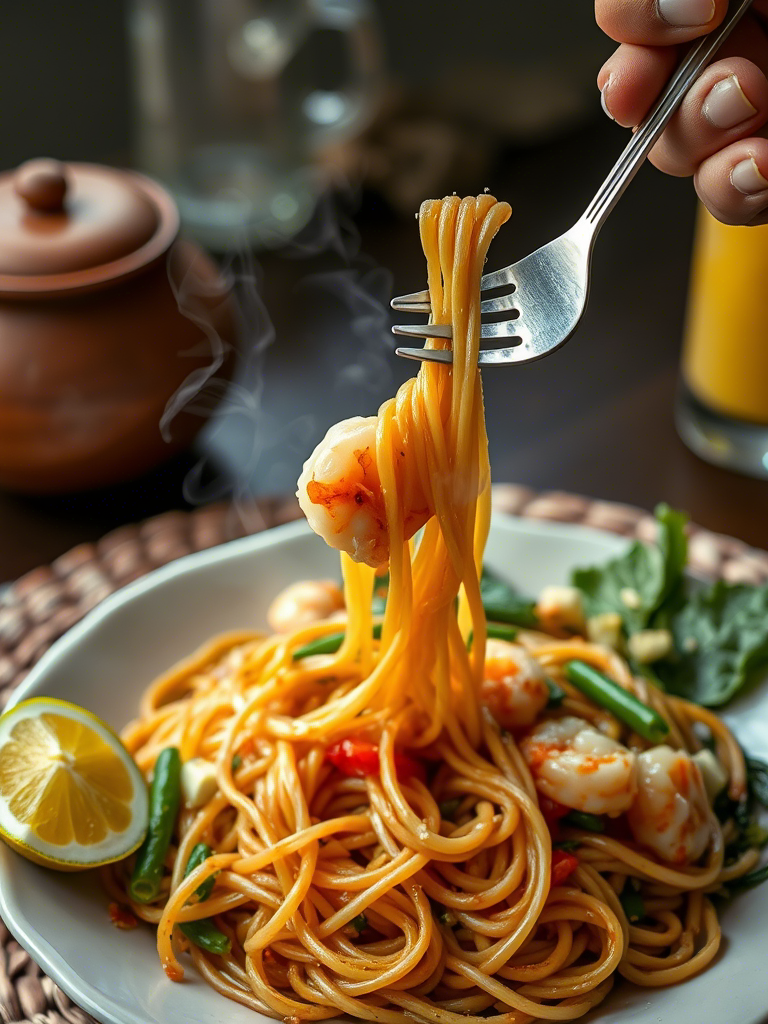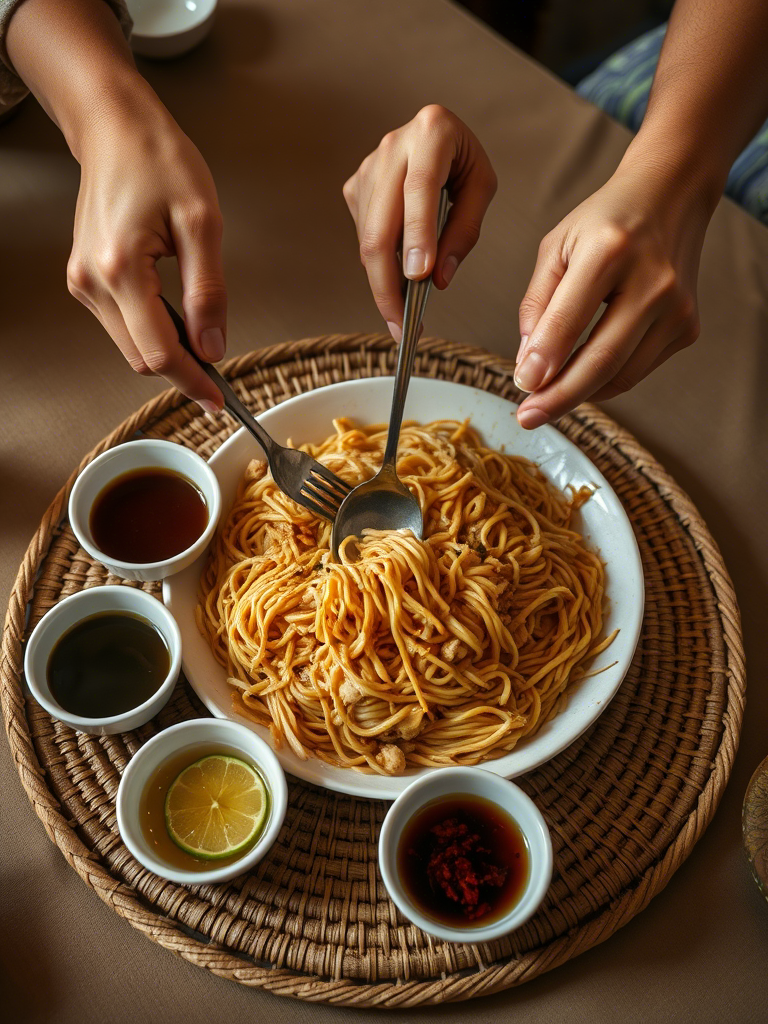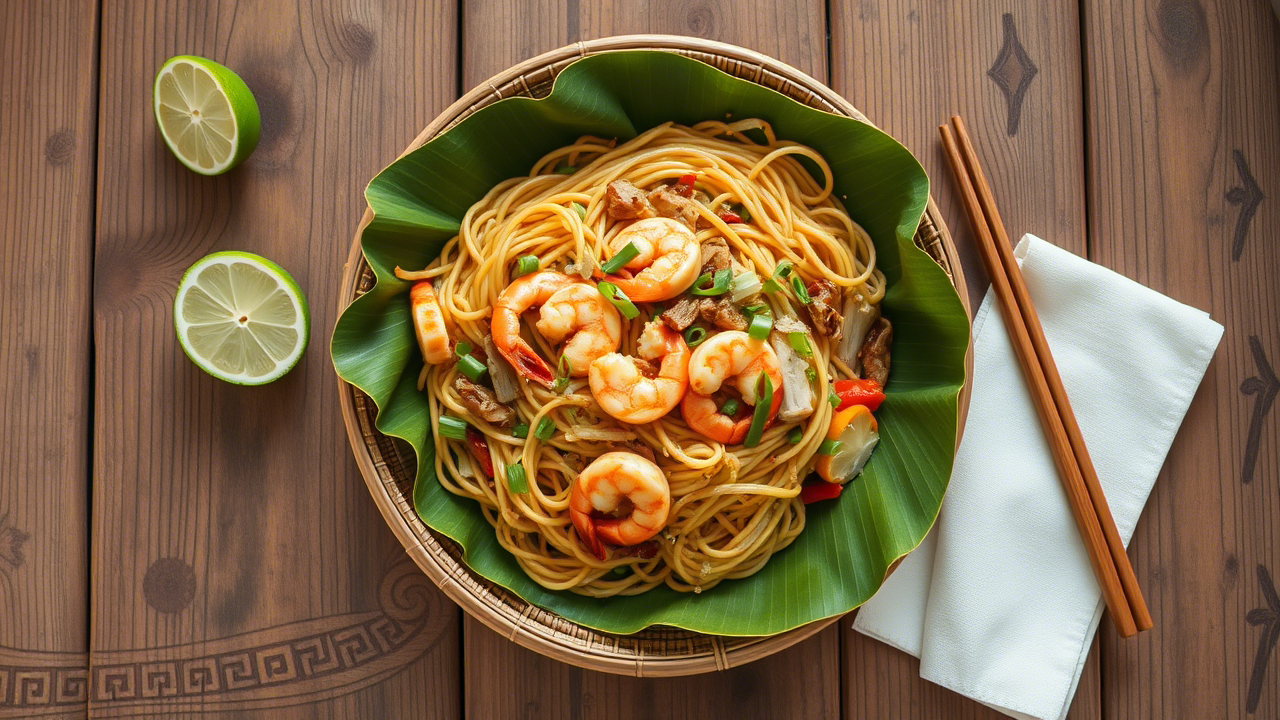Every Filipino gathering—no matter how big, how small, how joy-filled or grief-laden—has one thing in common: there’s gonna be pancit. You’ll find it nestled between the lumpia and the lechon, quietly holding its own. Pancit isn’t just food; it’s an unspoken code. A cultural cipher. A plateful of memory.
But beneath its humble noodles lies an intricate dance of textures, timing, and taste. If you’re looking to master pancit like a real Filipino home cook—or better yet, like a street-side pancitero who’s been doing this since Marcos was still president—you’ll need more than just a recipe. You’ll need to understand it. Really live inside the dish.
This article unpacks the layers of pancit. We’ll look at technique, regional variations, cooking science, and cultural nuance. And no, we’re not just dumping soy sauce on some noodles and calling it a day.
Let’s go deep. Not just stir-fry-deep. Legacy-deep.
What Is Pancit, Really?
“Pancit” is the blanket term Filipinos use for noodles. It’s borrowed from the Hokkien word pian i sit, which basically means “something conveniently cooked.” But don’t let that fool you—this ain’t your basic 2-minute noodle thing.
Pancit is a whole world.
There’s Pancit Canton, the most common, stir-fried with egg noodles and loaded with veggies, meat, and shrimp.
There’s Pancit Bihon, made with thin rice noodles that drink up sauce like thirsty sponges.
And then there’s Pancit Malabon, Pancit Palabok, Pancit Habhab, Pancit Luglug… You get the idea.
They vary in noodle type, sauce, toppings, region, and vibe.
But at the core? It’s always about balance—salty, umami, earthy, bright, chewy, tender, crisp. You can’t just throw stuff in a wok and expect to get applause.
The Core Elements of Great Pancit
Alright, let’s break this sucker down. What really makes a good pancit?
1. The Noodles (Don’t You Dare Undercook or Overcook ‘Em)
Filipinos use different noodles depending on the version. You’ve got:
- Bihon – thin rice vermicelli, semi-translucent, slippery little guys
- Canton – egg noodles, yellow and springy, like Chinese lo mein
- Sotanghon – glass noodles made from mung bean starch, gets soft fast
- Malabon – thick rice noodles, kinda chewy, loves that shrimp sauce
Don’t cook the noodles straight in the wok unless you really know what you’re doing. Most cooks soak or par-cook them first. Canton gets boiled just until pliable. Bihon? Just a hot water bath. And for the love of garlic, don’t let them turn to mush. That’s pancit treason.

2. The Aromatics and Sauces (This Is Where the Magic Starts)
You start with a hot wok or deep pan. Oil. Then garlic—lots. Onion. Sometimes ginger if you wanna jazz it up.
Once that garlic hits the oil? Game on.
Then the trifecta of Filipino seasoning: toyo (soy sauce), patis (fish sauce), and calamansi. If you’re abroad and can’t find calamansi, lime or lemon’ll do in a pinch—but it’s not quite the same. Calamansi’s got this tiny, bright bitterness that slices through the fat like a whispered insult at a family reunion.
And yes, oyster sauce often finds its way into the pan. Adds depth. Like basement-level umami.
3. Protein: Choose Wisely, or Be Judged
Pancit’s a “whatever you got” kind of dish, but that don’t mean it’s lawless. You wanna layer flavor, not just throw meat around like you’re in a street fight.
- Chicken thighs over breasts. More fat, more flavor. Period.
- Shrimp—with heads and shells if you’re not squeamish—adds ocean funk.
- Pork belly if you’re going rich. But render that fat first.
- Chinese sausage (longganisa or lap cheong) adds sweetness and chew.
- Even liver if you’re feeling bold. But sauté it gently, or it’ll turn to paste.
Pro tip? Brown the meats in batches. Develop that fond at the bottom of the pan. That’s gold. That’s flavor glue.
4. Veggies Aren’t Just Garnish, Okay?
It’s easy to treat the veg like a throw-in. Don’t.
Go for:
- Carrots, julienned thin as matchsticks.
- Cabbage, shredded—don’t overcook it into sadness.
- Green beans, sliced diagonally.
- Snow peas, if you’re feelin’ fancy.
Toss ’em in just long enough to soften slightly. You want crunch. Not limp sadness.
Techniques That Separate Real Cooks from Pretenders
Anyone can make pancit. Not everyone can make it sing.
Timing is Everything
Don’t put everything in the pan at once like a caveman with a wok.
Sauté aromatics → brown proteins → remove proteins → stir-fry veg → add noodles + sauce → toss everything back in.
Build layers. This ain’t a dump-and-stir.
The Sauce Ratio Must Be Obsessed Over
Too dry? It’s boring. Too wet? It’s glop.
Ideal pancit? Slick, but not drowning. Noodles should absorb just enough to be flavorful but still firm. If you see pooling liquid, you’ve gone off the rails.
The Toss-Toss-Toss Method
Use two spatulas. Flip the noodles gently but quickly, over and under. Don’t stab. Don’t stir like soup. Toss. Think like a baker folding meringue. You’re keeping volume, keeping bounce.
Common Mistakes That’ll Ruin Your Pancit
- Cooking noodles too early – They’ll get bloated. You want them hot and fresh, not soggy ghosts.
- Overcrowding the pan – The moment you steam instead of fry, flavor suffers.
- Skipping the acid – Calamansi isn’t optional. You need that zing.
- Using low heat – You want that wok hei. That char. That smoky depth.
Regional Variations: A Flavor Map of the Philippines
Pancit Malabon
Thick rice noodles. Bright orange shrimp sauce. Toppings galore—crushed chicharon, boiled egg, squid, shrimp, scallions. Basically the Lasagna of pancits. Messy, layered, glorious.
Pancit Palabok
Same idea, thinner noodles. Heavier on the garlic sauce. Sometimes includes tinapa (smoked fish) flakes. A favorite at birthdays.
Pancit Habhab
From Lucban, Quezon. Eaten off banana leaves, no utensils. Earthy. Savory. Made with miki noodles and poured with vinegar before eating. A street food king.
Pancit Canton
The “default.” Stir-fried egg noodles with veggies and meat. You’ll find a thousand versions—some with quail eggs, some with squid balls, some with zero rules at all.

Data Speaks: Why Pancit Is More Than a Meal
According to a 2021 survey by The Filipino Food Movement, pancit ranks in the top 5 most-consumed celebratory dishes across the country, second only to adobo.
And get this: over 90% of balikbayans (overseas Filipinos) say pancit is the dish that most reminds them of home.
Why? Because it travels. Every family’s got a version. A technique. A noodle preference. It’s passed on, taught casually—”here, just watch me”—but it lives deep in muscle memory.
Trends: The Pancit Scene in 2025 and Beyond
More Filipino-American chefs are reclaiming pancit as haute cuisine. You’ll see pancit on tasting menus in L.A., Chicago, London. Chef Carlo Lamagna in Portland’s Magna Kusina serves elevated pancit that still hits like home.
Plant-based pancit’s also taking root. Jackfruit as pork. Tofu with crisp edges. It works, but only if you season with intention. Pancit’s flexible, but it hates being bland.
Another trend? Pancit fusion. Kimchi pancit. Curry pancit. Even pancit lumpia mash-ups. Some purists roll their eyes. But hey, food evolves or it dies, right?
Actionable Tips for Mastering Pancit at Scale
- Feedin’ a crowd? Use a hotel pan. Mix ingredients separately, then assemble and reheat in batches with fresh calamansi and scallions.
- Pre-cook meats and store separately to avoid drying them out during the reheat process.
- Make a master sauce with soy, oyster, and calamansi and keep it bottled. Use as needed. Ratio? Start with 3:2:1.
Final Thoughts: What Pancit Teaches Us
Pancit’s not just about feeding people. It’s about showing up for them. Birthdays, funerals, graduations, housewarmings—pancit’s always there. Quietly dependable. Comforting. Joyful, even in sorrow.
It’s not fancy. But it’s home.
If you’re a pro in the kitchen, don’t just learn to cook pancit—learn to feel it. There’s rhythm in the way it comes together. There’s patience in waiting for the noodles to soak up the last bit of flavor. There’s honor in getting it right.
And when you finally serve it up? Don’t forget that last squeeze of calamansi. That’s not garnish.
That’s history.
That’s identity.
That’s love.
FAQs
What is the difference between Pancit Canton and Pancit Bihon?
Pancit Canton uses thick egg noodles while Pancit Bihon uses thin rice noodles.
Can I make pancit vegetarian or vegan?
Yes, substitute meat with tofu or mushrooms and use soy sauce instead of fish sauce.
What noodles should I use for authentic pancit?
It depends on the style—Canton (egg noodles), Bihon (rice vermicelli), or Malabon (thick rice noodles).
Do I need a wok to cook pancit?
No, but a large, deep pan helps distribute heat and makes tossing easier.
What’s the secret to non-soggy pancit noodles?
Soak or par-cook noodles separately, then finish them in the sauce briefly.
Why does pancit include calamansi?
Calamansi adds a bright, citrusy kick that balances the rich flavors.
Can I prep pancit in advance for a party?
Yes, just keep the noodles and toppings separate and combine before serving.
Is oyster sauce necessary for pancit?
It’s optional but adds depth and a rich umami layer to the sauce.
How long does cooked pancit last in the fridge?
About 2 to 3 days when stored in an airtight container.
Is pancit eaten with rice in Filipino culture?
Surprisingly yes—some Filipinos enjoy pancit with rice for extra carb satisfaction.
Ask ChatGPT

Mariana is a passionate home cook who creates delicious, easy-to-follow recipes for busy people. From energizing breakfasts to satisfying dinners and indulgent desserts, her dishes are designed to fuel both your body and hustle.
When she’s not in the kitchen, she’s exploring new flavors and dreaming up her next recipe to share with the Foodie Hustle community.

